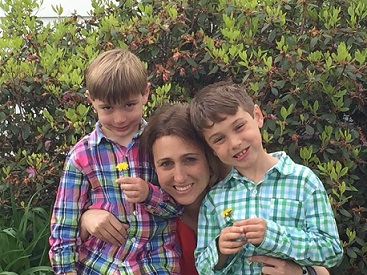Consumer Involvement




They say a cancer diagnosis hits you like a truck. In my case, it was an SUV, literally. It was a snowy afternoon in February 2015. I was coming home from an afternoon on the ski slopes with my oldest son. And there, coming directly at me, in my lane of traffic, was another car. It was a two-lane highway with snow piled high on either side. To make matters worse, there was a car in the other lane, so there was nowhere for me to go to avoid the accident.
I tried to take evasive steps, to cut a middle path between the two cars coming at me. Unfortunately, I was not successful. I avoided the head-on collision, but the car coming at me still hit the passenger side of my mini-van.
It was a bad accident. My van was ripped open on the passenger side. A gaping hole. Large parts of half of the car, just gone. But my son and I had survived. Thank heavens my husband and other son were not in the car. Thank heavens the passenger side had been empty. Nobody on that side of the car could have walked away unscathed.
Because my son was complaining of some pain and seemed in an obvious state of shock, I agreed to an ambulance transport to the local hospital. Out of an abundance of caution, I agreed to a trauma scan myself. I thought then that I had certainly, likely, survived the worst part of that day.
The scans showed that I was fine. There was no damage from the accident. But they showed more�a nearly four-centimeter mass in my left lung, deep in the lower lobe. Probably nothing, the technicians said. Follow up with your primary physician, they said. We see this all the time. All the time.
Turns out, they don't see THIS all the time, for what they had found was the thing I least expected: stage 3A non-small cell adenocarcinoma lung cancer, driven by a genetic translocation within the ALK gene.
As I think back to those early days of this long, tough journey, I can still remember how improbable�no, not improbable, for it seemed then impossible�this all was. I had never smoked. I had never been around secondhand smoke. I had not been exposed to risk factors like asbestos. Lung cancer was impossible. The diagnosis made no sense.
The things I have learned since then could fill a book. The things we know about lung cancer are not all true. You do NOT have to smoke to get lung cancer. You do NOT have to be exposed to risk factors. You are NOT safe from this disease if you avoid those things. All you need to get lung cancer is a pair of lungs. And perhaps that is why lung cancer is so common. Who knew? One in 16 will be diagnosed. That means we will almost all know somebody who gets this disease.
Certainly, though, a disease this common has to be survivable. If it weren�t, then there would be a public outrage. Right? No. Lung cancer is the number one cancer killer, by far. It is hardly ever discovered in the early stages. Hardly ever survivable in the advanced stages. And yet, there is deafening�dare I say, deadly'silence about this disease. Nobody knows that November is Lung Cancer Awareness month. The National Football League never stages a month in which it wears the ribbon or the color to mark lung cancer. In fact, there's not even an agreed-upon ribbon or color.
Why do I advocate? Why do I speak out? Why do I participate in programs like the Lung Cancer Research Program (LCRP)? I do so to make my journey make sense. I do it to give my experience meaning and purpose.
Those of us with lung cancer have to stand up and make our perspective heard. We have to demand different outcomes, better treatments, and new therapies. The status quo is not acceptable. We have to demand that we want a cure! I involve myself in advocacy, in outreach, and in research because I want to be part of the solution, and I am so grateful that the LCRP gives me an opportunity, in an important way, to help influence the direction of lung cancer research.
One day, there WILL be a cure for lung cancer. Until that day, we all HAVE to fight to make that a reality.
Last updated Friday, March 7, 2025














